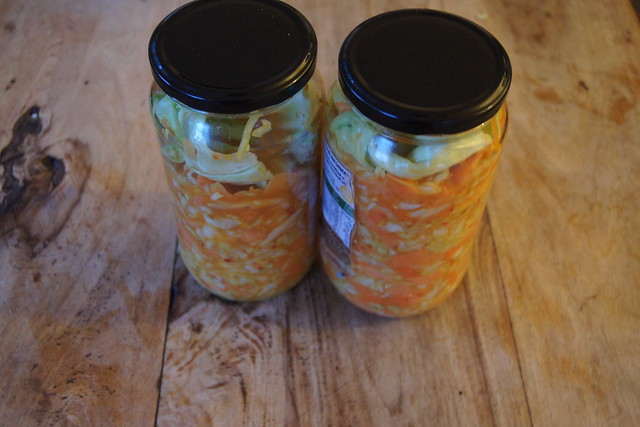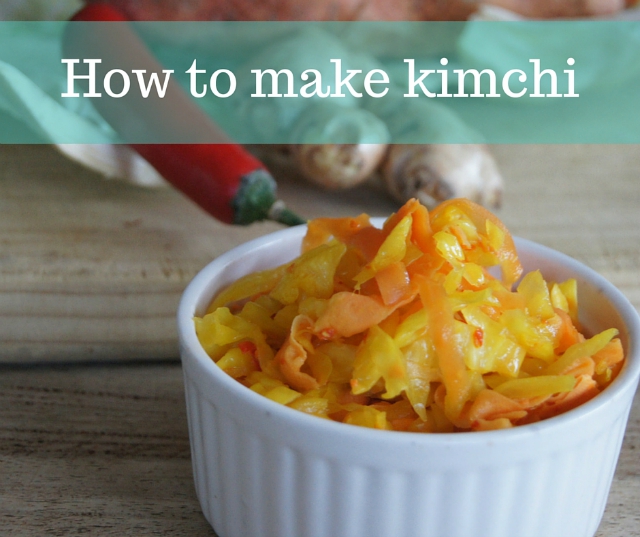
I love kimchi. I have been buying the Peace, Love and Vegetables brand for some time now and had been adding it to my lunches and/or dinners to add some flavours and extra goodness to my meals.
If you are not familiar with kimchi it is:
a traditional fermented Korean side dish made of vegetables with a variety of seasonings. In traditional preparation, kimchi was stored in underground in jars to keep cool during the summer months and unfrozen during the winter months. There are hundreds of varieties of kimchi made from napa cabbage, radish, scallion, or cucumber as a main ingredient.{source}
I really enjoy making food from scratch so have been working over the last couple of months to make my own kimchi. I have read widely on kimchi making and there are so many different lists of ingredients and methods out there. I wanted to replicate the flavour of the Peace, Love and Vegetables so used the ingredient list on the jar as my base.
I used these resources, taking bits and pieces from them to come up with a method that has worked well for me:
- Fermented Vegetables: The Basic Culturing Process
- What’s the Salt Ratio for making Sauerkraut?
- How To Make Easy Kimchi at Home
- The SureFire Sauerkraut Method… In a Jar: 7 Easy Steps
This recipe is less traditional as I use a standard cabbage and no shrimp paste or fish sauce, but it certainly tastes like the Peace, Love and Vegetables which make me very happy!
If you are wondering what all the fuss is about fermented foods, these articles are worth a read:
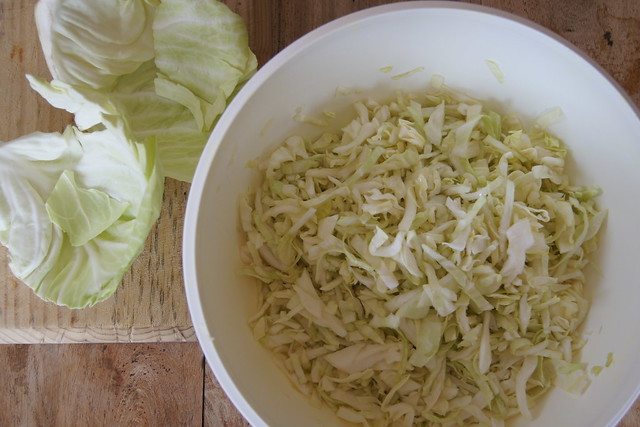 While there are a few steps in the process to make kimchi, it is actually easy, so do not be deterred – it is worth the effort. Once cut, I sprinkle salt on to the cabbage and use my hands to grind the salt into the cabbage. I then put a plate with weights on top and let it sit for a couple of hours. The salt helps draw the moisture from the cabbage.
While there are a few steps in the process to make kimchi, it is actually easy, so do not be deterred – it is worth the effort. Once cut, I sprinkle salt on to the cabbage and use my hands to grind the salt into the cabbage. I then put a plate with weights on top and let it sit for a couple of hours. The salt helps draw the moisture from the cabbage. 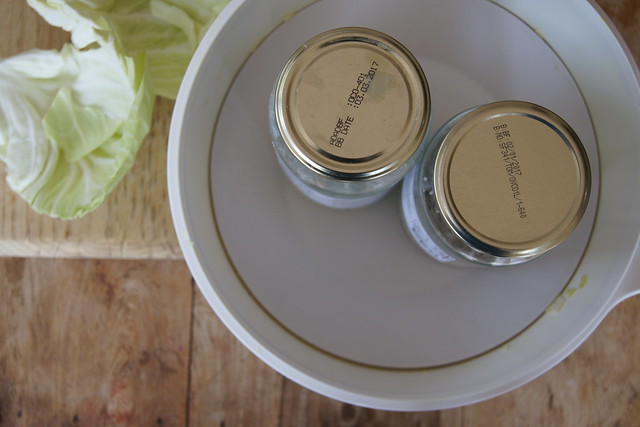
Once this process has nearly finished, I start preparing the remaining ingredients. I use a vegetable peeler to make fine slices of sweet potato and carrot, then chop them roughly with a knife.
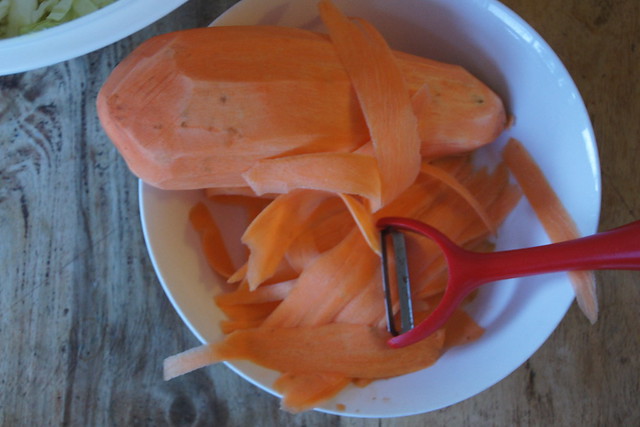 I use lot of ginger, turmeric, garlic and chilli, to make a paste. This little chopper comes in very handy for this.
I use lot of ginger, turmeric, garlic and chilli, to make a paste. This little chopper comes in very handy for this. 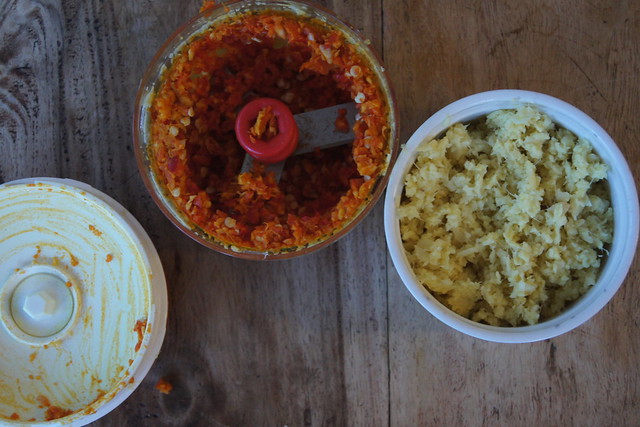
It is then a matter of mixing all the ingredients together.
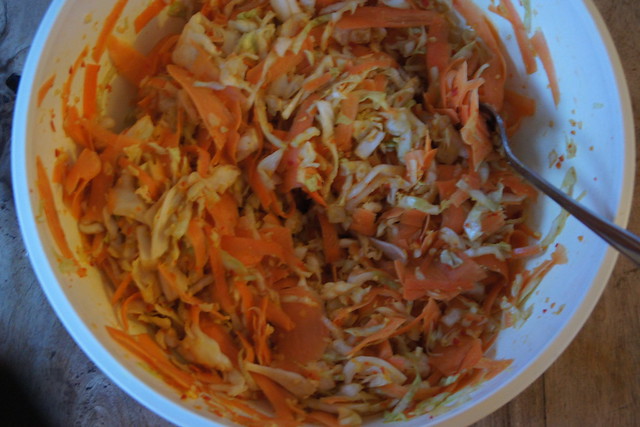 Once well combined the kimchi is then packed into jars. I put handfuls in at a time and press down with my fist. This helps release more liquid from the vegetables.
Once well combined the kimchi is then packed into jars. I put handfuls in at a time and press down with my fist. This helps release more liquid from the vegetables. 
I continue the packing process until the jar is almost full.
 Always keep the outer layer of the cabbage, to place on top of the kimchi while it ferments.
Always keep the outer layer of the cabbage, to place on top of the kimchi while it ferments. 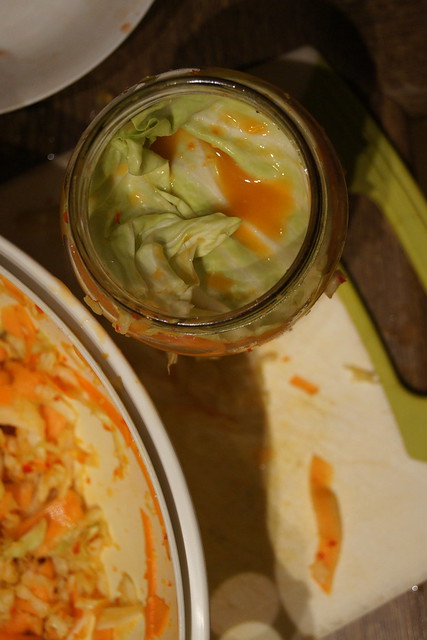
The jars of kimchi are then placed up on a high shelf (open space) in the kitchen to ferment for 3 -5 days.
My kids actually detest the smell of kimchi and don’t eat it at all. More for me! At least most of them drink kombucha so are getting the health benefits from that. 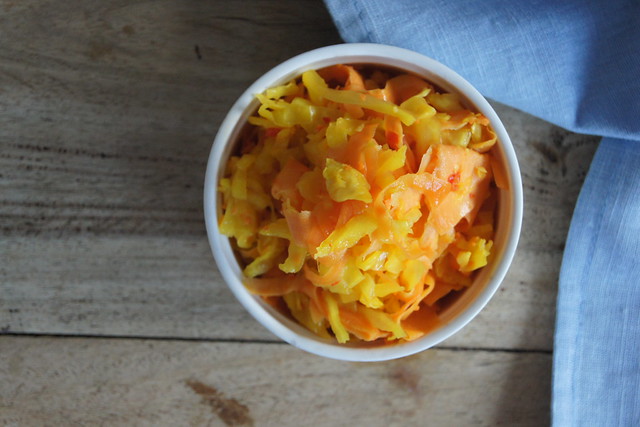
Once the kimchi has fermented in can be stored in the fridge.
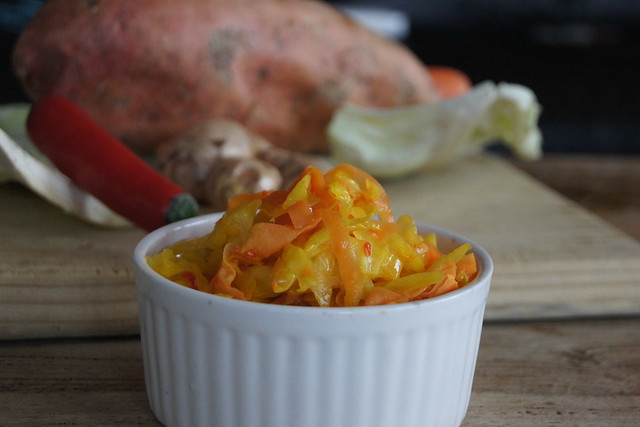 Kimchi is an easy way to get more veggies and flavour on my plate, which is why I love it so much.
Kimchi is an easy way to get more veggies and flavour on my plate, which is why I love it so much. 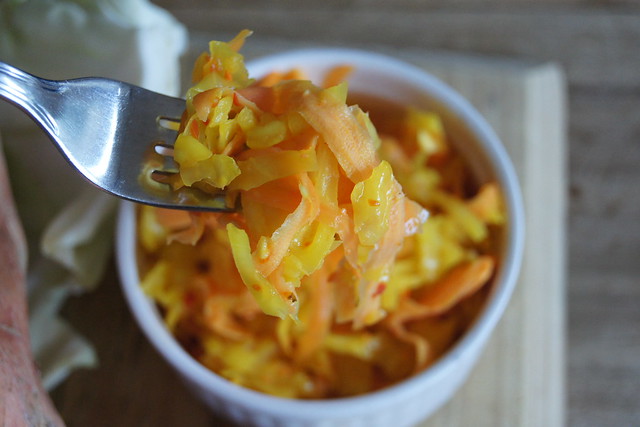
- I large cabbage
- 4 tsp Celtic sea salt
- 400 grams sweet potato
- 250 grams carrot
- 6 cms ginger
- 4 cms turmeric
- 4 cloves garlic
- 2 red chillies
- Cut cabbage to your desired width and shape. I cut it up finely and into shorter pieces which makes for easier eating.
- Place the cabbage in a large bowl and sprinkle salt on to the cabbage.
- Using your hands (I recommend using gloves) massage the salt into the cabbage and squeeze the cabbage with your hands.
- Place a plate with weights on top and let it sit for a couple of hours. The salt helps draw the moisture from the cabbage.
- Once this process has nearly finished, begin preparing the remaining ingredients. I use a vegetable peeler to make fine slices of sweet potato and carrot, then chop them roughly with a knife.
- Peel and mince ginger, turmeric, garlic and chilli, to make a paste. I use a Tupperware little chopper for this, but you could grate/crush the spices.
- It is then a matter of mixing all the ingredients together. Again I recommend using gloved hands for this.
- Once well combined the kimchi is then packed into jars. Place handfuls in at a time and press down with your fist. This helps release more liquid from the vegetables. Continue the packing process until the jar is almost full. You need to leave some space at the top though.
- Always keep the outer layer of the cabbage, to place on top of the kimchi while it ferments. Ensure the cabbage leaf cabbage mixture submerged in the brine while it ferments. Some people place a weight on top to ensure this happens.
- The jars of kimchi are then placed up on a high shelf (open space) in the kitchen to ferment for 3 -5 days. Length of time depends on temperature and other factors, so do a taste test before putting in the fridge.
- Once ready kimchi can be stored in the fridge.

